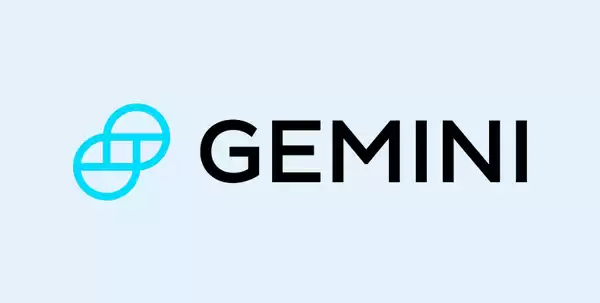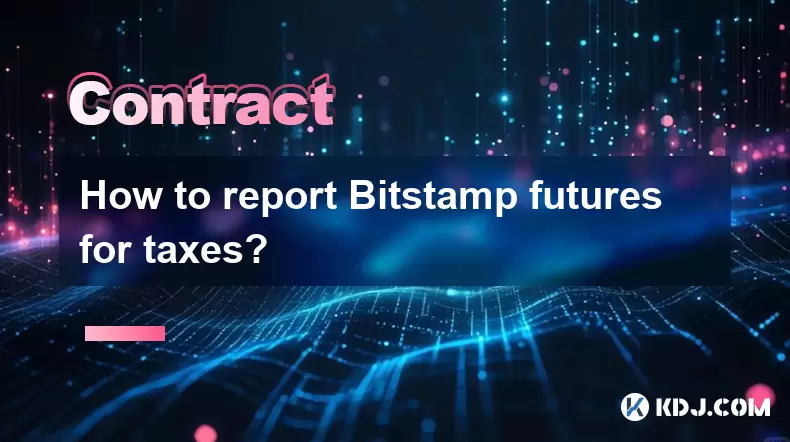-
 Bitcoin
Bitcoin $115100
1.27% -
 Ethereum
Ethereum $3675
2.71% -
 XRP
XRP $2.995
1.45% -
 Tether USDt
Tether USDt $1.000
0.02% -
 BNB
BNB $769.8
2.64% -
 Solana
Solana $168.0
3.25% -
 USDC
USDC $0.9999
-0.01% -
 TRON
TRON $0.3371
1.48% -
 Dogecoin
Dogecoin $0.2051
3.36% -
 Cardano
Cardano $0.7394
2.30% -
 Hyperliquid
Hyperliquid $38.15
0.42% -
 Stellar
Stellar $0.3966
-0.36% -
 Sui
Sui $3.486
2.93% -
 Chainlink
Chainlink $16.72
2.52% -
 Bitcoin Cash
Bitcoin Cash $568.0
4.36% -
 Hedera
Hedera $0.2440
2.59% -
 Ethena USDe
Ethena USDe $1.001
0.04% -
 Avalanche
Avalanche $22.16
2.06% -
 Litecoin
Litecoin $119.1
-0.73% -
 UNUS SED LEO
UNUS SED LEO $8.991
0.04% -
 Toncoin
Toncoin $3.232
-0.39% -
 Shiba Inu
Shiba Inu $0.00001233
2.82% -
 Uniswap
Uniswap $9.717
2.53% -
 Polkadot
Polkadot $3.664
1.85% -
 Dai
Dai $1.000
0.01% -
 Monero
Monero $281.2
-3.89% -
 Bitget Token
Bitget Token $4.350
1.55% -
 Cronos
Cronos $0.1428
5.07% -
 Pepe
Pepe $0.00001050
3.68% -
 Aave
Aave $262.3
3.54%
Gemini leverage trading process
To initiate leverage trading on Gemini, submit an application outlining trading experience, financial health, and investment goals for review within 4-5 business days.
Nov 11, 2024 at 07:49 pm

Gemini Leverage Trading Process: A Step-by-Step Guide
Leverage trading is a strategy that allows traders to increase their potential profits by borrowing funds from an exchange. This borrowed capital can be used to amplify trading positions, but it also comes with increased risk.
Gemini, a reputable cryptocurrency exchange, offers its users access to leverage trading. This detailed guide will walk you through the Gemini leverage trading process, from opening an account to executing trades.
Step 1: Open a Gemini Account
To begin leverage trading on Gemini, you will need to first create an account. The account opening process involves providing personal information, verifying your identity, and funding your account.
Account Opening:
- Visit the Gemini website and click on the "Sign Up" button.
- Fill out the registration form with your personal information, including name, email address, date of birth, and country of residence.
- Verify your email address by clicking on the link sent to your inbox.
Identity Verification:
- To enable trading, you must verify your identity by submitting a government-issued ID, such as a passport or driver's license.
- Follow the instructions on Gemini's website to upload clear images of your ID.
Funding Your Account:
- Once your identity is verified, you can fund your Gemini account using various methods, including bank transfer, credit card, or crypto deposits.
- Select your preferred funding method and follow the on-screen instructions to complete the transaction.
Step 2: Enable Leverage Trading
After your account setup, you need to enable leverage trading by submitting an application.
Application Process:
- Log into your Gemini account and navigate to the "Settings" menu.
- Click on the "Margin Trading" option and follow the instructions to submit your application.
- Provide details about your trading experience, financial status, and investment goals.
Approval Timeline:
- Gemini will review your application and make a decision within 4-5 business days.
- The approval process considers factors such as your trading experience, risk tolerance, and financial standing.
- Once approved, you will receive an email notification confirming your leverage trading activation.
Step 3: Choose a Trading Pair
Gemini offers leverage trading for several cryptocurrency pairs, including BTC/USD, ETH/USD, and SOL/USD.
Available Trading Pairs:
- Bitcoin (BTC)
- Ethereum (ETH)
- Solana (SOL)
- Dai (DAI)
- USD Coin (USDC)
- TrueUSD (TUSD)
Consideration Factors:
- When choosing a trading pair, consider the market conditions, your trading strategy, and the available leverage options.
- Highly volatile pairs may offer higher potential profits but also carry greater risk.
Step 4: Determine Leverage Level
Leverage is expressed as a ratio, such as 2x, 5x, or 10x. This ratio indicates how much capital you are borrowing from the exchange.
Available Leverage Options:
- Gemini offers leverage options ranging from 2x to 10x, depending on the trading pair.
- Higher leverage amplifies both potential profits and losses.
Risk Management:
- Choose a leverage level that aligns with your risk tolerance.
- Exceeding your risk tolerance can lead to significant financial losses.
- It is recommended to start with a lower leverage ratio and gradually increase it as you gain experience.
Step 5: Enter an Order
Once you have determined your leverage level, you can enter an order to execute a leveraged trade.
Types of Orders:
- Limit Order: Specifies a price at which you want to buy or sell a cryptocurrency.
- Market Order: Executes your order at the current market price.
- Stop-Limit Order: Combines a stop price with a limit price, allowing you to set parameters for your trade's execution.
Order Details:
- Specify the trading pair, order type, order size, and leverage level.
- Monitor the market conditions and adjust your orders accordingly.
Step 6: Monitor and Manage Positions
After entering your trade, it is essential to monitor its performance and manage your positions.
Real-Time Tracking:
- Gemini provides real-time updates on your open positions, including their profit/loss and open price.
- Use this information to make informed decisions about adjusting your trades.
Managing Risk:
- Implement risk management strategies, such as stop-loss orders, to limit potential losses.
- Regularly assess market conditions and adjust your positions accordingly.
Step 7: Closing Positions and Loan Repayment
When you are ready to close a position, you can do so by entering an opposite-side order. For example, if you initially bought BTC using leverage, you would sell it to close the position.
Loan Repayment:
- After closing your position, you need to repay the loan you borrowed from Gemini, plus any accrued interest.
- The amount of interest depends on the loan's duration and the interest rate charged by Gemini.
Disclaimer:info@kdj.com
The information provided is not trading advice. kdj.com does not assume any responsibility for any investments made based on the information provided in this article. Cryptocurrencies are highly volatile and it is highly recommended that you invest with caution after thorough research!
If you believe that the content used on this website infringes your copyright, please contact us immediately (info@kdj.com) and we will delete it promptly.
- BlockDAG, Litecoin, and Cardano: Charting the Course in Crypto's Dynamic Waters
- 2025-08-07 09:09:06
- Fireverse Token: Igniting a Musical Revolution in Web3
- 2025-08-07 08:27:45
- Ethereum, L2 Withdrawals, and Decentralization: A New Yorker's Take
- 2025-08-07 08:32:33
- Avalanche vs. Ruvi AI: Daily Sales Tell a Story of Crypto Disruption
- 2025-08-07 06:29:35
- DeSoc: The Crypto to Buy Now for a Decentralized Future (and Maybe 43x Gains!)
- 2025-08-07 06:50:16
- Arctic Pablo Coin: Riding the Meme Coin Wave with a Deflationary Twist
- 2025-08-07 07:18:13
Related knowledge

Why is my Bitstamp futures position being liquidated?
Jul 23,2025 at 11:08am
Understanding Futures Liquidation on BitstampFutures trading on Bitstamp involves borrowing funds to open leveraged positions, which amplifies both po...

How to report Bitstamp futures for taxes?
Jul 30,2025 at 08:35am
Understanding Bitstamp Futures and Taxable EventsWhen trading Bitstamp futures, it’s essential to recognize that these financial instruments are treat...

Does Bitstamp offer inverse contracts?
Jul 23,2025 at 01:28pm
Understanding Inverse Contracts in Cryptocurrency TradingIn the realm of cryptocurrency derivatives, inverse contracts are a specific type of futures ...

What is the difference between futures and perpetuals on Bitstamp?
Jul 27,2025 at 05:08am
Understanding Futures Contracts on BitstampFutures contracts on Bitstamp are financial derivatives that allow traders to speculate on the future price...

How to find your Bitstamp futures trade history?
Jul 23,2025 at 08:07am
Understanding Bitstamp and Futures Trading AvailabilityAs of the current state of Bitstamp’s service offerings, it is critical to clarify that Bitstam...

Can I use a trailing stop on Bitstamp futures?
Jul 23,2025 at 01:42pm
Understanding Trailing Stops in Cryptocurrency TradingA trailing stop is a dynamic type of stop-loss order that adjusts automatically as the price of ...

Why is my Bitstamp futures position being liquidated?
Jul 23,2025 at 11:08am
Understanding Futures Liquidation on BitstampFutures trading on Bitstamp involves borrowing funds to open leveraged positions, which amplifies both po...

How to report Bitstamp futures for taxes?
Jul 30,2025 at 08:35am
Understanding Bitstamp Futures and Taxable EventsWhen trading Bitstamp futures, it’s essential to recognize that these financial instruments are treat...

Does Bitstamp offer inverse contracts?
Jul 23,2025 at 01:28pm
Understanding Inverse Contracts in Cryptocurrency TradingIn the realm of cryptocurrency derivatives, inverse contracts are a specific type of futures ...

What is the difference between futures and perpetuals on Bitstamp?
Jul 27,2025 at 05:08am
Understanding Futures Contracts on BitstampFutures contracts on Bitstamp are financial derivatives that allow traders to speculate on the future price...

How to find your Bitstamp futures trade history?
Jul 23,2025 at 08:07am
Understanding Bitstamp and Futures Trading AvailabilityAs of the current state of Bitstamp’s service offerings, it is critical to clarify that Bitstam...

Can I use a trailing stop on Bitstamp futures?
Jul 23,2025 at 01:42pm
Understanding Trailing Stops in Cryptocurrency TradingA trailing stop is a dynamic type of stop-loss order that adjusts automatically as the price of ...
See all articles

























































































